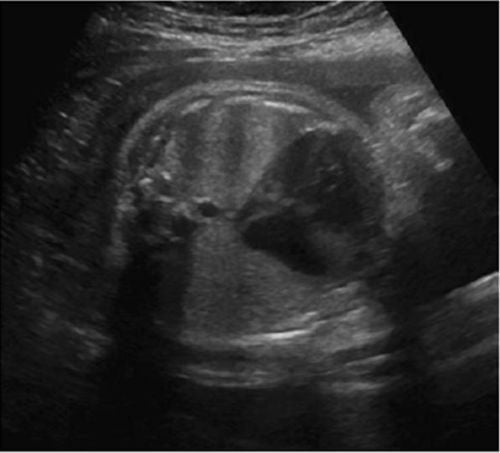This is an automatically translated article.
The article is professionally consulted by Master, Doctor Nguyen Van Thanh - Obstetrician and Gynecologist - Department of Obstetrics and Gynecology - Vinmec Nha Trang International General HospitalAbortion is something no woman wants. However, due to unwanted pregnancy, birth defects, not being healthy enough to get pregnant or other reasons, women have no choice but to have an abortion. Here are 17 questions to keep in mind when having an abortion in the first trimester.
1. What is an abortion?
Abortion is the surgical termination of pregnancy to remove the embryo or fetus and placenta from the uterus or using abortion pills.
Trắc nghiệm: Bạn có hiểu đúng về dấu hiệu mang thai sớm?
Các dấu hiệu mang thai sớm không phải chỉ mỗi trễ kinh mà còn có rất nhiều dấu hiệu khác như xuất huyết âm đạo, ngực căng tức,… Điểm xem bạn biết được bao nhiêu dấu hiệu mang thai sớm thông qua bài trắc nghiệm này nhé!
2. What is a first trimester abortion?
Most abortions are performed during the first trimester, because this is considered one of the safest times of abortion. To ensure the safety for yourself as well as the abortion results, you should find a quality, reputable and reliable medical address to perform an abortion with the support of a medical equipment system. modern economy.
Abortion in the first trimester can be done by a procedure (eg aspiration curettage) or by taking pills. Currently, abortion is the most common method of abortion.
3. How is surgical abortion performed?
Your doctor will insert a speculum into your vagina to expose the cervix. A catheter connected to a vacuum suction pump will be inserted into the cervix to suck the fetus and placenta out.

4. What pain relievers are used before the abortion?
Before the procedure, the doctor will give a local anesthetic at the cervix. In addition, sedation or general anesthesia may be used.
5. What happens after the first trimester abortion?
After the abortion procedure, you will rest in the recovery room. After an hour, you can go home. In some cases, cramps may occur for a day or two afterward. Vaginal bleeding can last up to 2 weeks.
6. How is medical abortion performed?
Medical abortion in the first trimester does not require procedures or anesthesia, but requires multiple visits at reputable and quality medical facilities. Some medications cause miscarriages, such as pills or pills that are inserted into the vagina. You can use them at home without going to the clinic.

7. What are the symptoms after taking the abortion pill?
The drugs used in medical abortion will cause bleeding that is much heavier than a normal menstrual period. Symptoms include severe cramps, nausea, fever, chills. You can take over-the-counter pain relievers, and if necessary, your doctor will prescribe stronger pain relievers for you. For an abortion to be complete, it will take several days or weeks.8. Should I go for a follow-up visit after a medical abortion?
Within 2 weeks of a medical abortion, you should visit a reputable medical facility to see if the abortion is complete. If you are still pregnant after taking the medicine, you may be given another dose of the medicine or have a surgical abortion.9. What is a second trimester abortion?
A second trimester abortion is performed when the fetus is more than 13 weeks old. It is done by dilatation (D&E) or medication (medical abortion). A surgical abortion has fewer complications than a medical abortion. Most women who have a second trimester abortion have a surgical abortion.10. How is the second trimester abortion performed?
Before performing an abortion, the doctor will administer medication to dilate the cervix and then general anesthesia or cervical anesthesia to relieve pain. The fetus will be removed through the vagina using a dilatation (D&E) procedure. Finally, the doctor will use a suction tube to remove the remaining part of the cervix to the outside.11. What are the symptoms after a mid-pregnancy surgical abortion?
For 1 or 2 days after the abortion procedure, you may experience soreness or cramping. In addition, vaginal bleeding can last up to 2 weeks.
12. How is mid-pregnancy medical abortion performed?
A second-trimester medical abortion is usually done in a hospital where you can be monitored throughout the procedure. Medicines used to induce a miscarriage may be given vaginally, taken by mouth, injected into the uterus, or given through an intravenous (IV) line. These drugs cause the uterus to contract and expel the fetus. Your doctor will give you pain medicine or a cervical anesthetic.13. What should be done after a medical abortion in mid-pregnancy?
Medications that cause miscarriage usually start working within 12 hours. While the time to complete an abortion is difficult to predict, it is generally expected that an abortion will be completed within 12 to 24 hours. The drug can cause side effects such as nausea, fever, and diarrhea.14. What complications can occur with abortion?
Abortion by medical or surgical methods can sometimes cause serious complications after abortion such as:The fetus is still in the woman's uterus, especially in the case of drug abortion. heavy bleeding (hemorrhagia) Damage to the uterus and other organs.
15. What signs need to see a doctor after an abortion?
If any of the following signs occur, seek medical attention immediately:Severe abdominal or back pain Excessive bleeding (hemorrhagia) High fever
16. When should contraception be used after an abortion?
You can get pregnant right after an abortion, even before your period returns. Most methods of contraception after an abortion can be started on the same day of the abortion.17. What are the long-term health effects from abortion?
Some women worry that abortion may affect their future health. Most one-time abortions do not affect your ability to get pregnant or your risk of future pregnancy complications. For women who have abortions there may be an increased risk of depression or other health problems.
Please dial HOTLINE for more information or register for an appointment HERE. Download MyVinmec app to make appointments faster and to manage your bookings easily.
References: Acog.org














